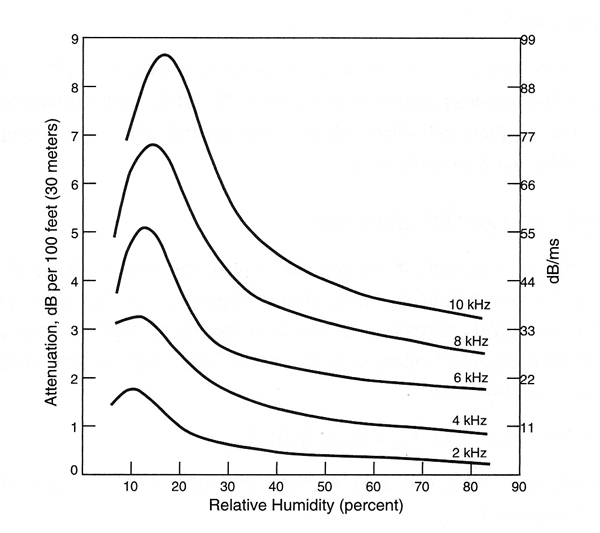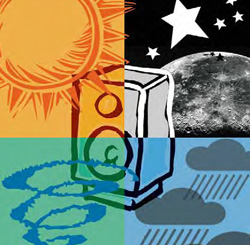Summer is here, and a good many of us are out working those “mud and dust” shows, fairs and festivals.
We get to clean amplifier filters on a daily basis, put wedges into garbage bags to keep them dry, mix with visqueen draped over the console (also to keep it dry). And, we’ll have a shop vacuum at front of house as well as the monitor “beach.”
That said, the toughest aspect to deal with when doing shows in the great outdoors is the effects of atmospheric conditions on a system’s behavior. Temperature changes, as well as wind and humidity can wreak havoc on our carefully aimed and tuned rigs.
And the larger the venue, the greater the effect that these conditions will have on sound propagation. The effects are not preventable, but at least they’re (at least partly) predictable.
Morning, Noon & Night
Any time you’re doing sound outside, temperature gradients are an issue. In the morning, the ground retains the nighttime coolness longer than the surrounding air, resulting in a cool air layer near the ground with a warmer layer above it.
The velocity of sound increases slightly with higher temperatures. For example, at an elevation of 0 feet above sea level, at a temperature of 50 degrees (Fahrenheit), sound will travel 110.7 feet in 100 milliseconds (ms).
At 90 degrees F, it will travel 115.14 feet in the same 100 ms. This will force the wavefront angle of sound from loudspeakers to track slightly downward, bending toward the cold air layer.
In more extreme conditions, sound waves can actually bounce off the ground and skip over part of the audience before refracting downward again further on, causing dead spots in the system coverage.
In the evening the opposite happens. Because the ground is still warm while the air is cooling off, a layer of heat is trapped near the surface. Thus the wavefront angles upward, and can be refracted right over the top of the crowd. (Note also that the warm air layer generated by the crowd itself increases this tendency.)

Wind can produce similar effects. The speed of sound traveling with the wind will equal the speed of sound plus the wind speed; thus, when sound is firing into the wind, you must subtract the wind speed.
And since the wind speed in a boundary region like the ground is at or near zero, a wavefront heading into the wind will refract upward as the top part of the wave is slowed slightly by the headwind.
With the wind behind sound – pushing it – the wave will bend downward. It’s not the wind itself that causes problems, but the velocity variations with altitude. The effects of a crosswind can be analyzed with a little simple trigonometry. (Is there really any such thing?)
Let’s look at an example. Start with the fact that the nominal speed of sound is 770 miles per hour (mph). Then, let’s say that a crosswind is blowing at 90 degrees to the direction of the sound system propagation at a rate of 40 mph.
We can use those speeds as distances on the legs of a right triangle and determine the angle of deflection. In this example it’s about six degrees.
However, this can be a little deceiving. Because the typical cluster may have a horizontal dispersion of 120 degrees or more, part of the wavefront is moving perpendicular to the wind, but other parts are quartering into the wind or away from the wind.
This causes their behavior to be affected as though the wind were pushing the sound as noted above. Very complex!















